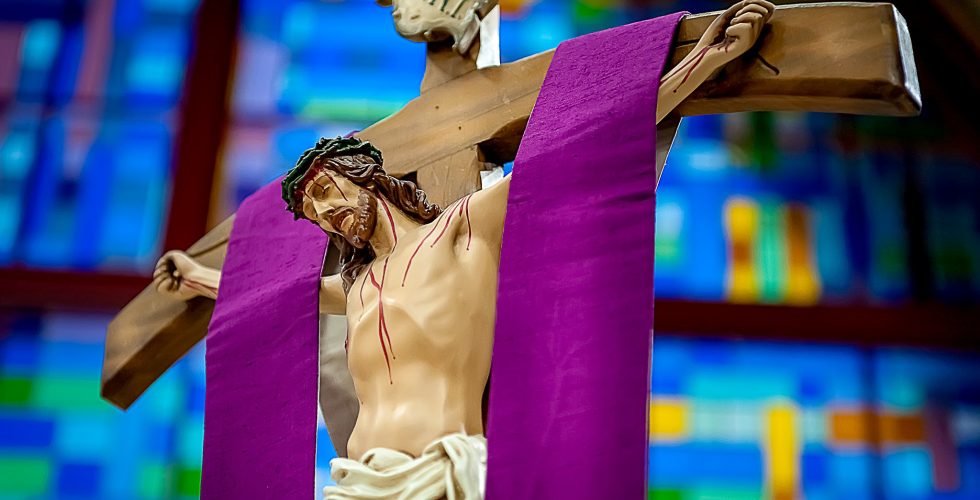Lent is an important time of preparation for the Lord’s Passover, that is, the feast of Jesus’ resurrection.
In this period the Christian is invited to make a sincere effort of conversion. Yes, of conversion, because it is a process that must happen every day in our life. Even though we know this, with the rush of everyday life, we often forget to live this path and end up relaxing a little and putting aside our conversion practices.
In this sense, Lent comes to rescue this process in us, calling us again to the path of holiness, in response to Jesus’ request: “Be holy, for I am holy” (1Pe 1:16).
Therefore, during this liturgical season we are invited to practice charity, penance and fasting.
In prayer, we seek to draw even closer to the Lord, in order to obtain His forgiveness and thus be reconciled with Him.
Already in the practice of fasting, we demonstrate to Christ that we do not want to be slaves to our wants and desires. We strive for self-mastery!
On the other hand, with the practice of charity we respond to the command of Jesus who asks us to love our neighbor as ourselves (cf. Mt 22,37-39).
At the same time, with charity we benefit those who need help and we experience the joy of being able to make a real and concrete gesture to Jesus himself. After all, He said: “As often as you did it to one of these little ones, who are my brothers, you did it to me!” (Matthew 25:40).
Autodesk Alias Surface 2023 Crack
The symbolism of the Lenten season
The Season of Lent is loaded with symbolism.
Among them, an allusion to the 40 days that Jesus spent in the desert in fasting and prayer. This was his preparation for what was to come: his Passion.
Also in these days Jesus was tempted by the devil, and in this temptation we find another symbolism. In his human condition, Jesus suffered the same temptations that we are subjected to. But even weak and beaten down by the long fast, He conquered all temptations.
In this way, it became for us the fortress where we can take shelter in the most terrible and distressing moments. We too, in our weakness, find strength, in Jesus, to be strong.
That is why Saint Paul wrote: “This is why I rejoice in weaknesses, in affronts, in needs, in persecutions, in the deep sorrow suffered for Christ’s sake. For when I feel weak, then I am strong” (2Cor 12,10).
Outro simbolismo da Quaresma é a referência aos 40 anos que o povo de Israel errou pelo deserto, antes de entrar na terra prometida (cf. Dt 8,2).
Quaresma: 40 dias?
Todos aprendemos que a Quaresma é um tempo que dura 40 dias.
No entanto, se contarmos os dias que se seguem a partir da Quarta-Feira de Cinzas, que é quando esse período se inicia, até o Sábado Santo, quando termina, resulta em 46 dias.
Como se explica isso?
Na verdade, os domingos não contam como dias de jejum e penitência, por isso são excluídos dessa contagem.
Segundo a Igreja, cada domingo é uma pequena Páscoa, “dia em que, por tradição apostólica, celebra-se o mistério pascal” (cânon 1.246 do Código de Direito Canônico).
Por isso, aos domingos devemos evitar qualquer atitude penitencial.
Como devemos viver esse tempo?
A Quaresma é um tempo favorável para alcançarmos a Misericórdia de Deus, fazendo memória da Paixão de Cristo e de Seu amor, por meio das práticas penitenciais.
Neste sentido, a Igreja nos ensina que é um tempo particularmente apropriado para a oração, a penitência e a caridade.
Além disso, de acordo com o Catecismo da Igreja (nº 1438) a Quaresma é um tempo particularmente apropriado para:
- os exercícios espirituais, ou seja, à oração mais constante e intensa;
- liturgias penitenciais, que são o exame de consciência, o arrependimento e a confissão;
- peregrinações a algum Santuário em sinal de penitência;
- privações voluntárias como o jejum;
- à partilha fraterna (obras de caridade e missionárias).
No entanto, quando se fala, principalmente, em penitência, muitos “torcem o nariz”. Esquecem-se de que Jesus começou a Sua pregação nos exortando à penitência: “Fazei penitência, porque está próximo o Reino dos céus” (Mateus 4,17).
Portanto, ignorar as práticas penitenciais é o mesmo que ignorar a pregação de Cristo.
Por outro lado, há os que imaginam que as práticas penitenciais se referem à autoflagelação, o que absolutamente não o é, ou apenas às práticas exteriores, como o jejum e a esmola.
Na verdade, a essência da penitência é interior, por isso não deve ser confundida com as práticas exteriores, pois elas pouco ou nada têm valor sem a penitência interior: “Rasgai vossos corações e não vossas vestes; voltai ao Senhor, vosso Deus, porque ele é bom e compassivo, longânime e indulgente” (Joel 2,13).
Much less should it be confused with the desire to inflict suffering on one’s own body.
Interior disposition in Lent
Saints Roberto Belarmino and Cornelius a Lápide point out that it was the apostles who designated Lent at the beginning of Christianity so that every Christian can worthily celebrate the resurrection of Jesus.
So it doesn’t matter which penance practices you choose to do during Lent.
What matters most is your inner disposition and the love you dedicate to the One who, out of love, gave himself up on a cross for your salvation!




